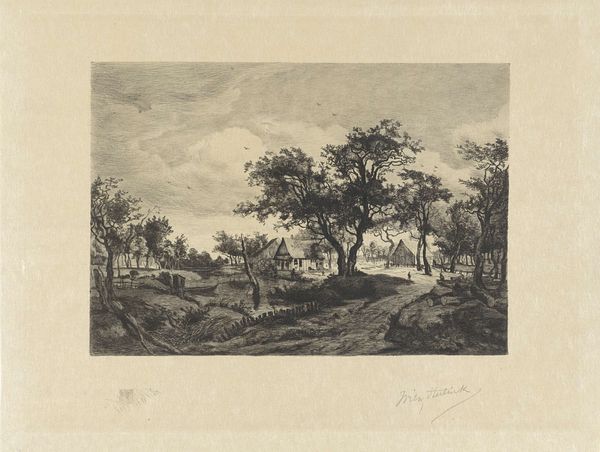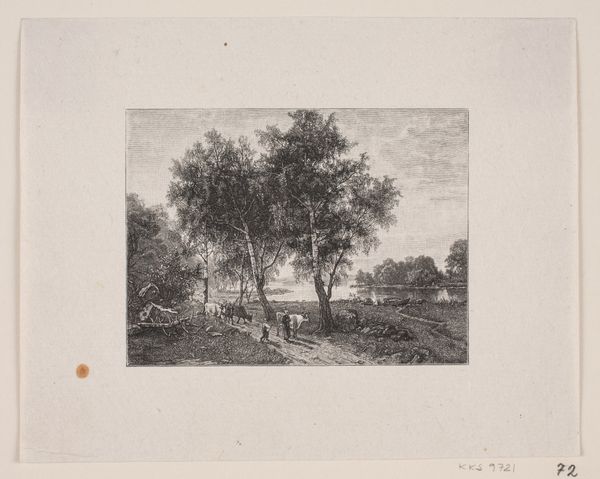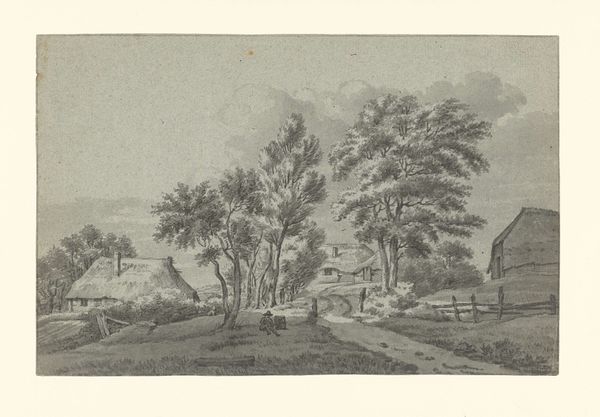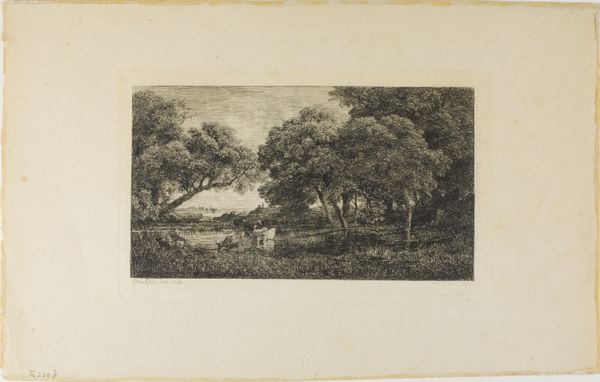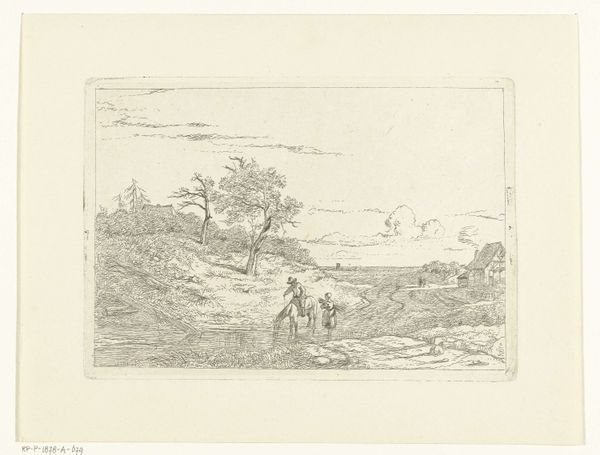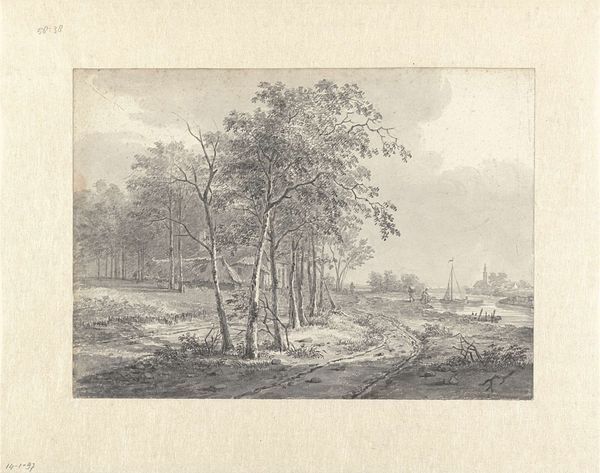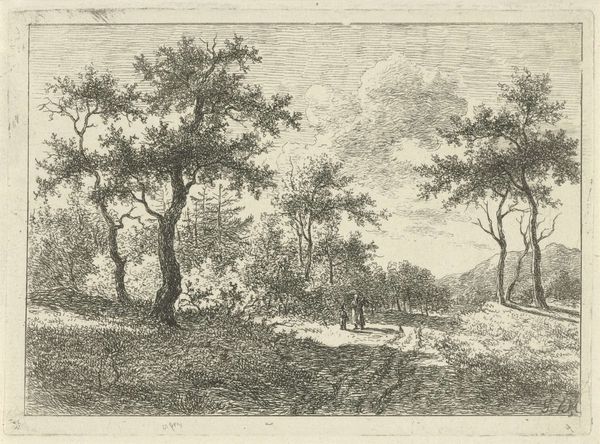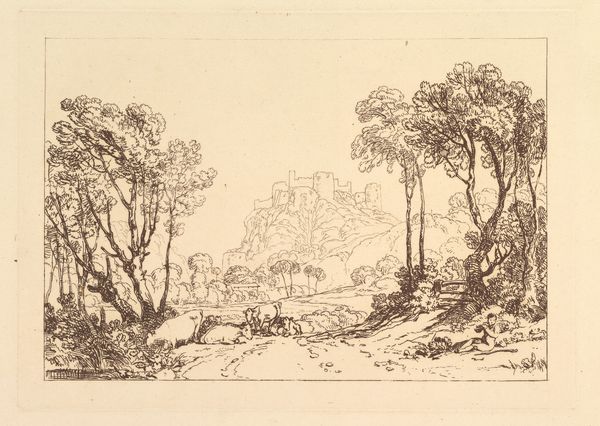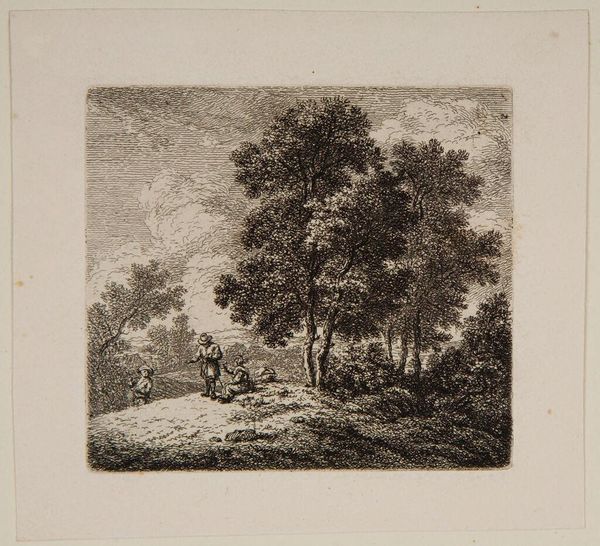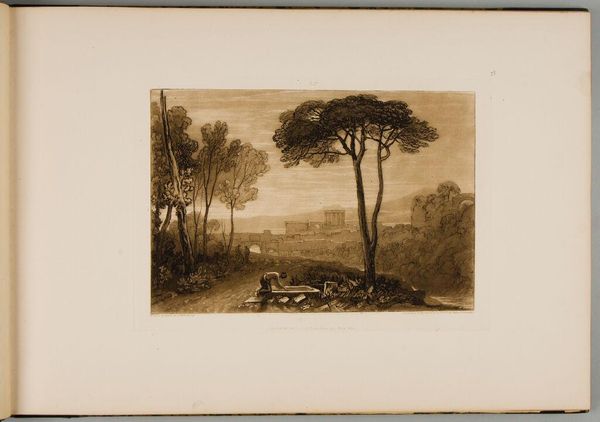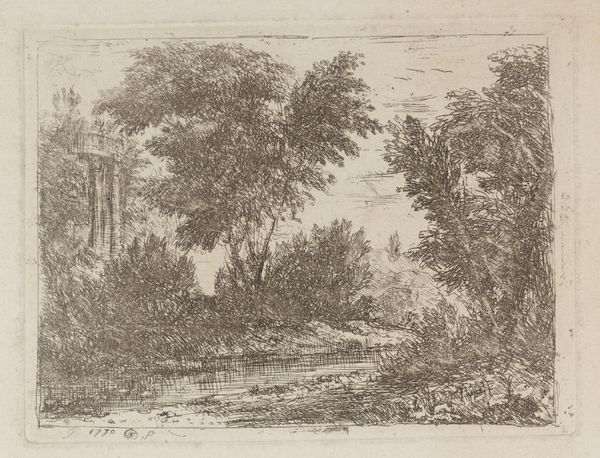
print, etching
#
dutch-golden-age
# print
#
etching
#
old engraving style
#
landscape
#
pencil drawing
#
genre-painting
#
realism
Dimensions: height 258 mm, width 345 mm
Copyright: Rijks Museum: Open Domain
Editor: Willem Steelink’s "Landschap met herders," or "Landscape with Shepherds," an etching from around 1888 to 1891, presents such a tranquil scene. The monochromatic print evokes a feeling of nostalgia, a world perhaps a little simpler than our own. What strikes you about this piece? Curator: I am intrigued by the recurrence of the pastoral theme. From antiquity through the Renaissance and even into the late 19th century, artists continuously returned to the shepherd as a potent symbol. What qualities do you think that the shepherd might embody? Editor: Hmmm, perhaps something about caretaking, being grounded… maybe a connection to religious imagery? Curator: Precisely. The shepherd, whether tending flocks or leading people, became intertwined with ideals of guidance and stewardship, think of the Good Shepherd, and images that offer a sense of order and natural harmony. Notice how Steelink employs traditional landscape conventions: framing the composition with trees, leading the eye towards a distant body of water, thus creating a sense of depth, beckoning the viewer into this timeless realm. What feeling do you have about the human figures in the work? Editor: They almost blend into the landscape; they feel like they belong there. They’re not dominant, but integrated, part of a system. Curator: Exactly. The figures embody harmony with the landscape. The return to this image underscores enduring social longings for simpler, perhaps idealized existences. Editor: I never really thought about the historical persistence of that imagery and what it means, how it's constantly revived and reshaped, reflecting different values at different times. Curator: Art offers us that continuity and connection with what has gone before. It is the persistent power of these symbols to resonate across time.
Comments
No comments
Be the first to comment and join the conversation on the ultimate creative platform.
